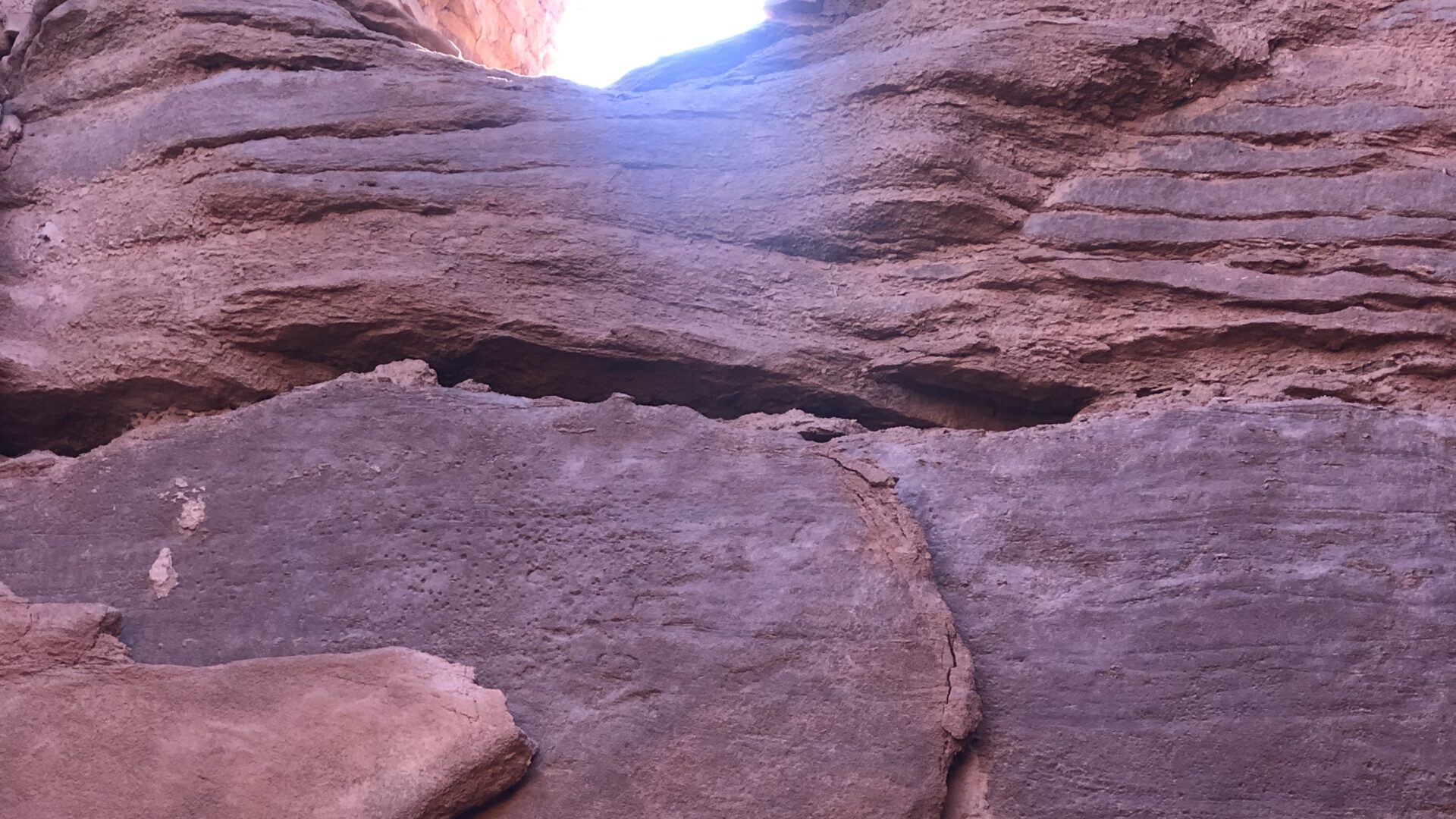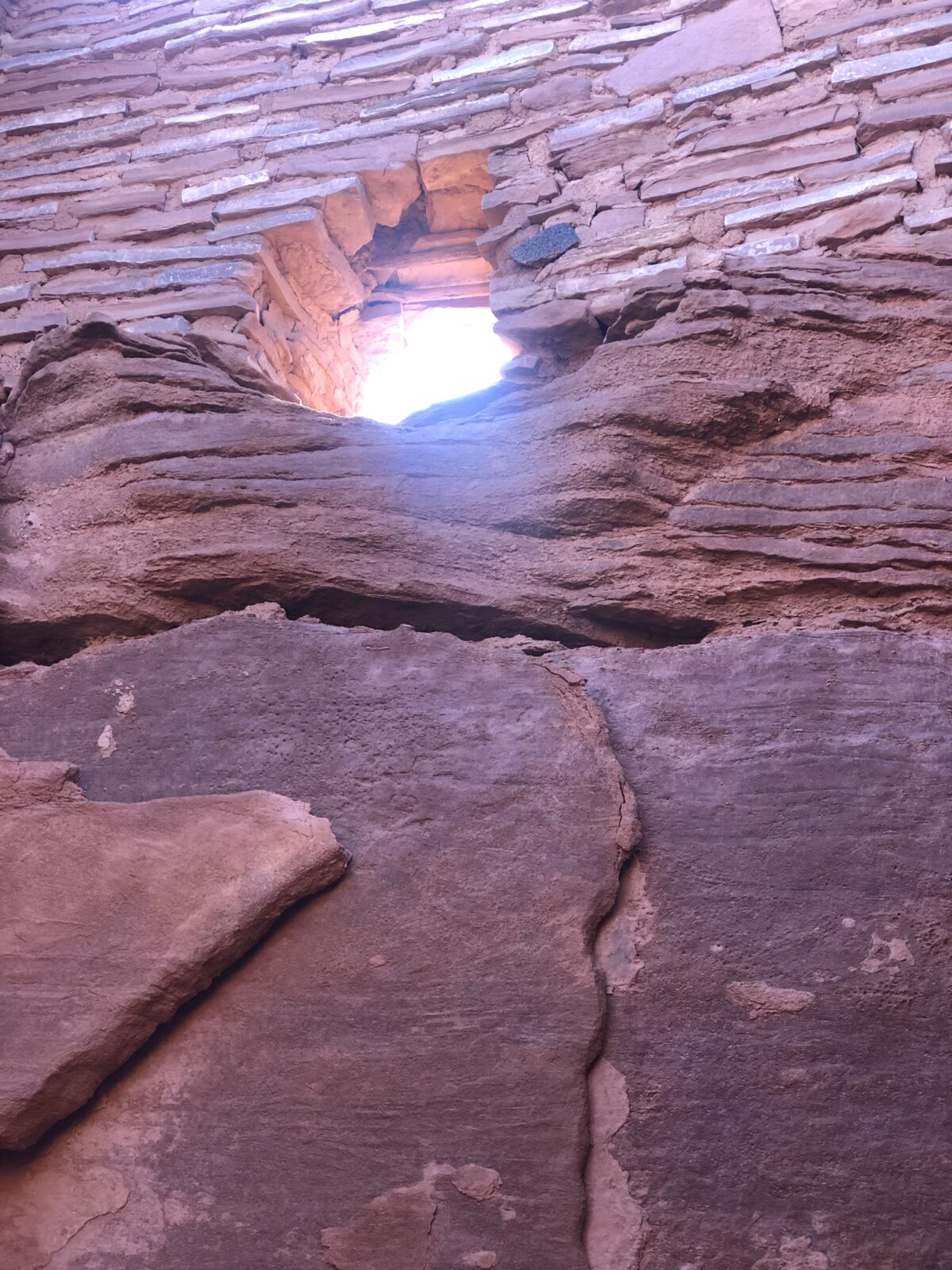Wupatki National Monument
Visitors to the Flagstaff, Arizona area should make time to take the scenic drive from Sunset Crater Volcano National Monument through to Wupatki National Monument. It is just 35 miles, but the change in scenery is crazy. You begin at Sunset Crater (7000 feet elevation) with lava fields and cinder cones, then continue through Coconino National Forest with pines and junipers, and finally drop 2,000 feet to the Wupatki Basin and Antelope Prairie. Each time you turn west, there are gorgeous views of cinder domes and then the San Francisco Peaks in the distance.
Some 800 years ago, the puebloan peoples built communities and farmed in the shadow of the nearby volcano. Farming had always been difficult in this harsh dry land, but the ash helped by holding in some of the moisture of infrequent precipitation.
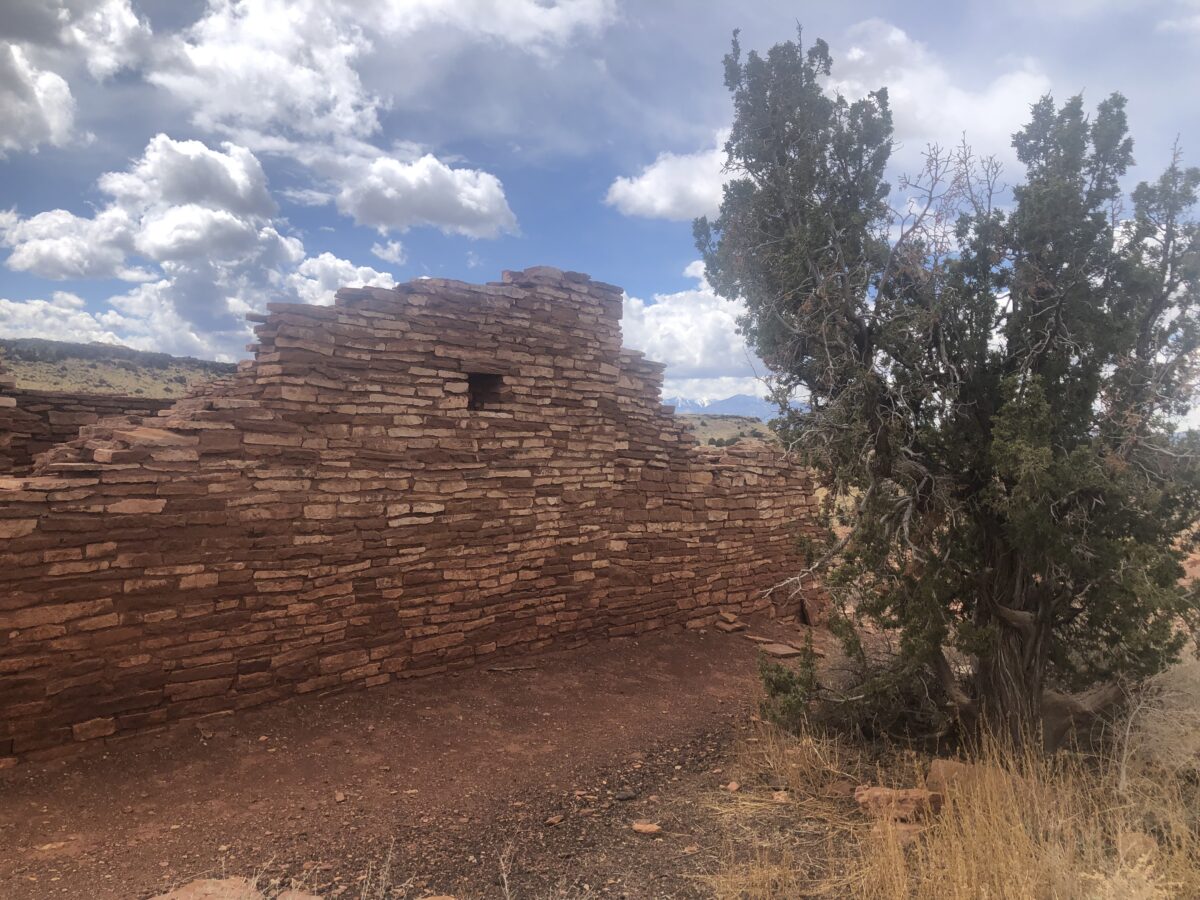
It is hard to imagine hundreds of people sustaining themselves in these farming communities during the 1100 and 1200’s. After enduring long periods of drought and slowly depleting resources, they moved on. Descendants may be found today in the Hopi, Navajo and Hohokam communities.
About Wupatki
In Hopi, “Wupatki” means Tall House, and that it is. Located behind the visitor center, a short interpretive trail (1/2 mile loop) takes you around the ruins of what was once a multi-story Sinagua pueblo with as many as 100 rooms built around a rock.
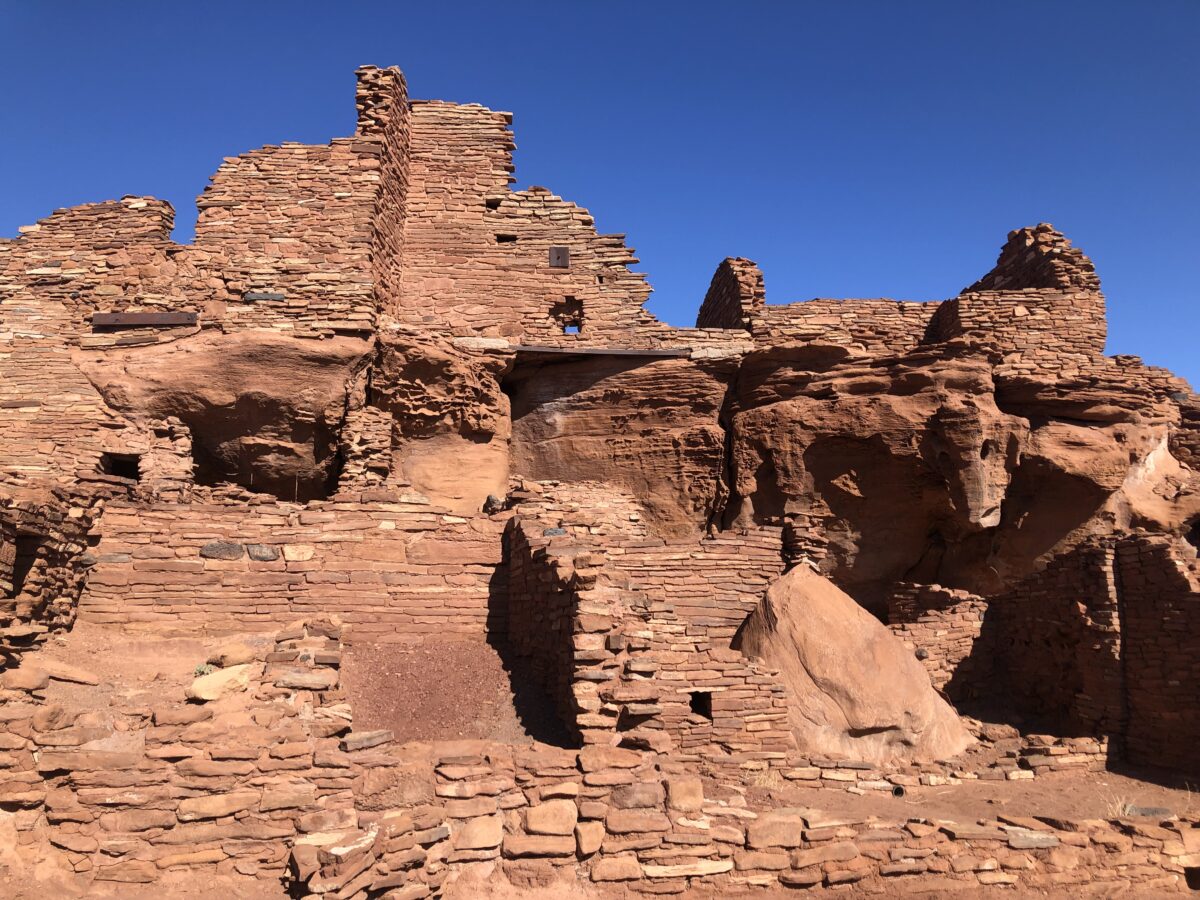
Along with the tall house, there was also a ball court. This is the northernmost ball court of its kind in Arizona, but there are many throughout southern Arizona. We had seen one at Casa Grande Ruins. In the Wupatki visitor center there is a map showing several dozen all around the state. Along with artifacts that attest to a wide trading community, the ball court is clear evidence that the residents of the time socialized with villagers to the south.
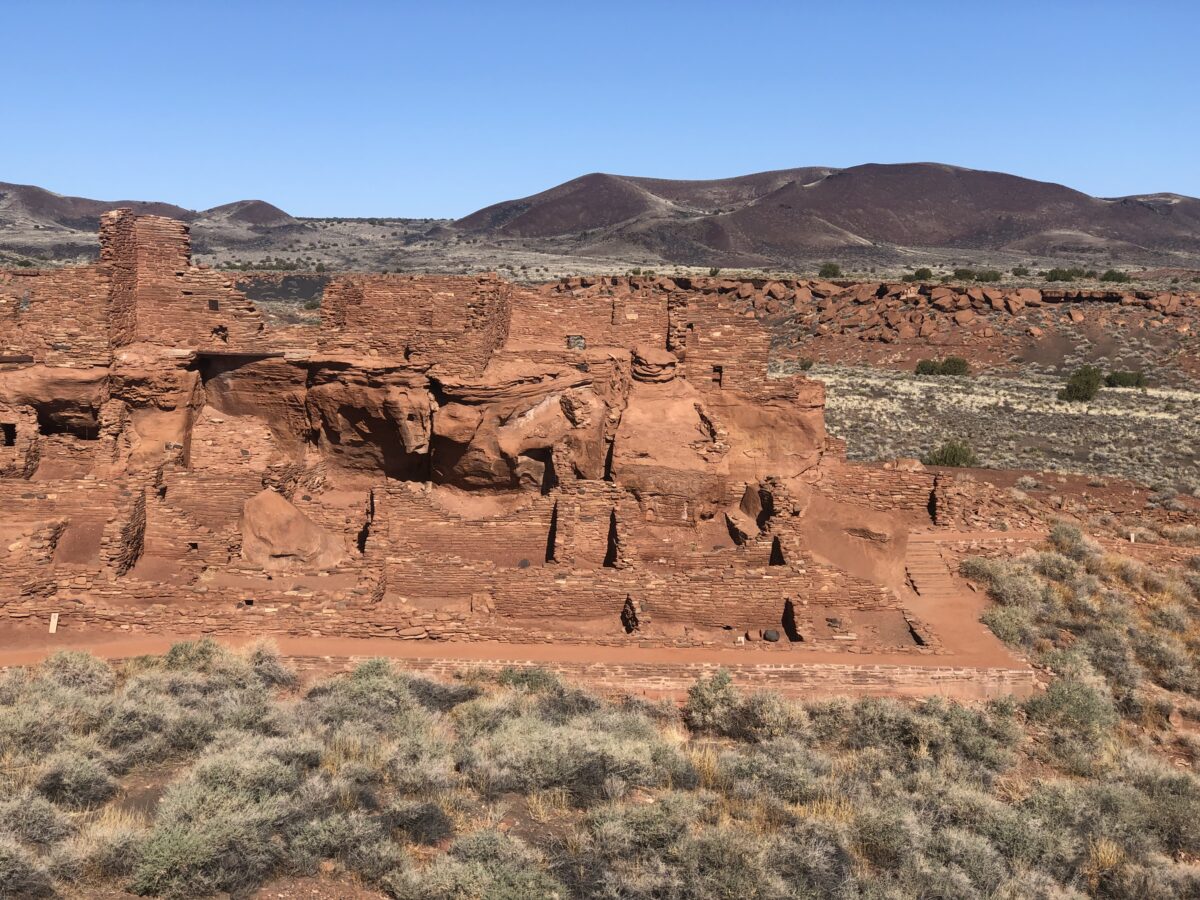
Box Canyon Dwellings
There are several other pueblos within the 35,000 acre national monument. In fact, they say there are over 800 ruins. One area that is easy to reach are the Box Canyon Dwellings, featuring Lomaki Pueblo. Also constructed from limestone and sandstone, these were built some 800 years ago.
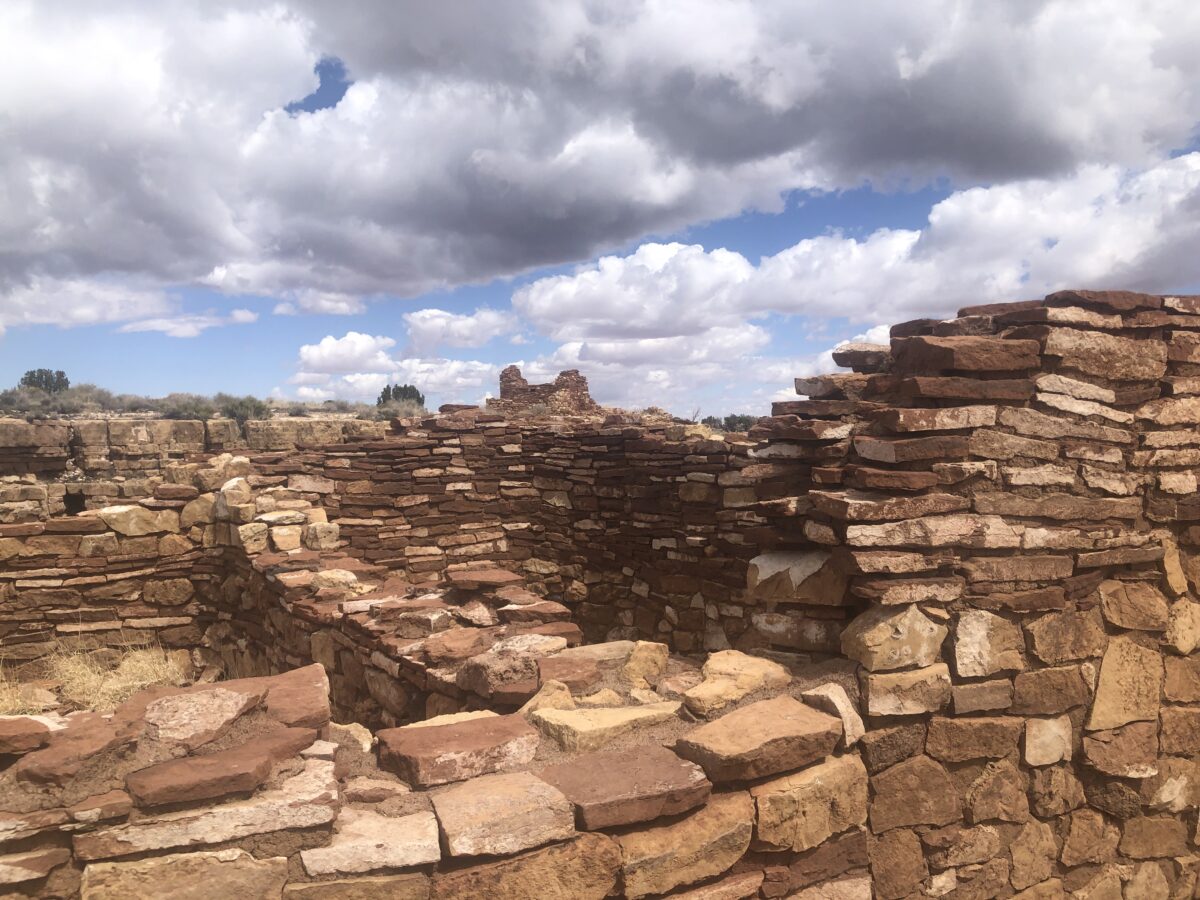
What makes them unique is that they were built on the edge of a crack in the earth, a series of canyons that they were able to farm. Also interesting is that they are not reconstructed. It is amazing to think that these simple rock structures have survived hundreds of years.
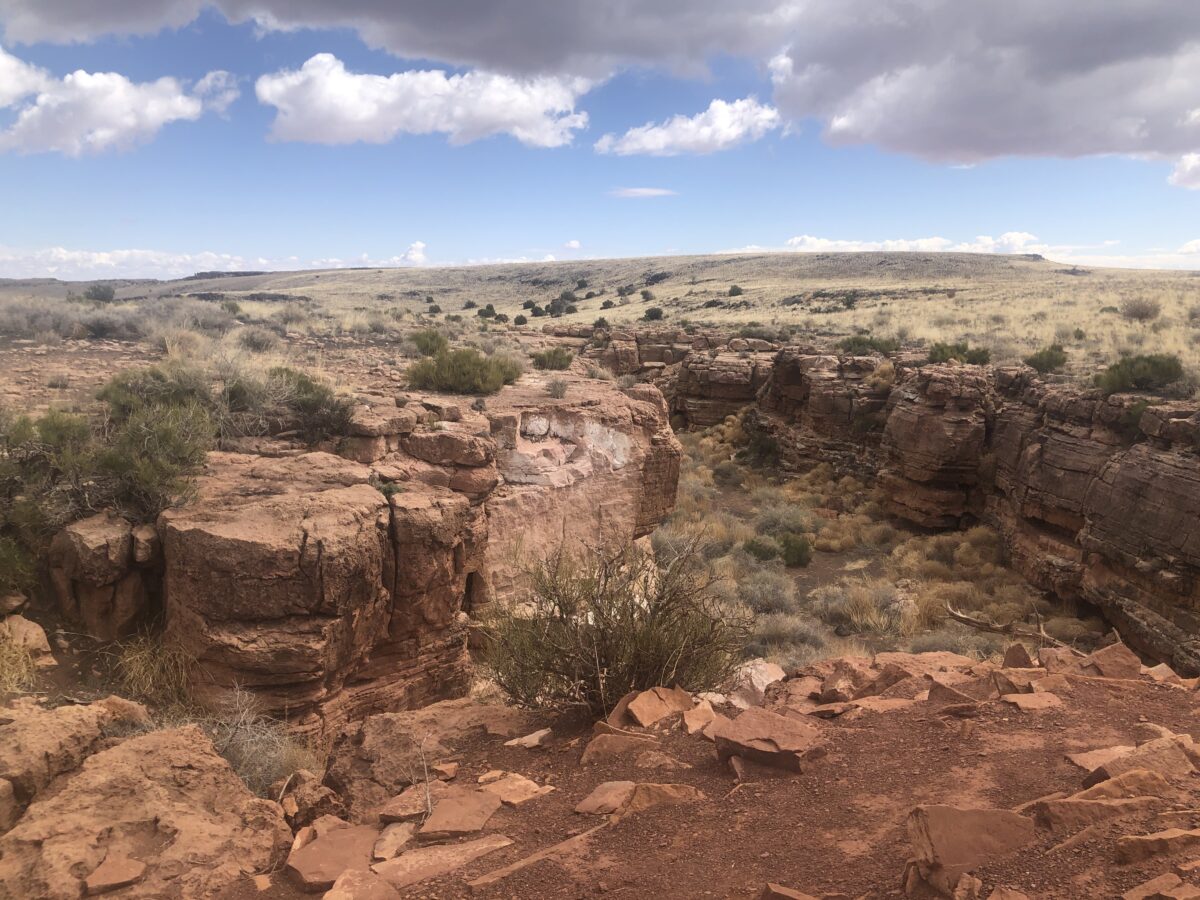
About Wupatki National Monument
Created in 1924, under President Calvin Coolidge, Wupatki National Monument not only protects these ruins, it also reminds us that this region has been inhabited for hundreds of years. Arizona has a rich history of inhabitation – not only do you see this at Wupatki, you can also visit other national monuments that preserve this history: Montezuma Castle and Tuzigoot, Tonto, Walnut Canyon, Casa Grande Ruins, Navajo National Monument and Canyon de Chelly.
Are you trying to visit all the National Parks?
If your goal is to visit them, one or all, we’d love to help you strategize. Give us a call at (480) 609-3978 or drop us a note here. We always enjoy talking with people who share our passion for visiting National Parks, and National Park Units.
#FindYourPark
#SeeAmericaFirst
